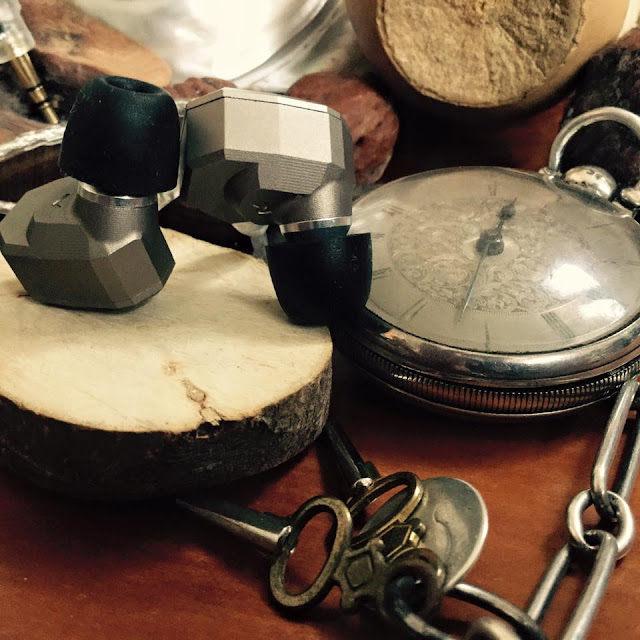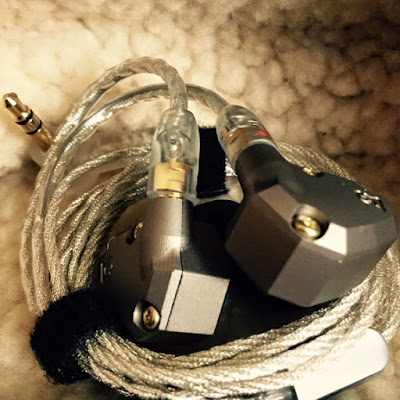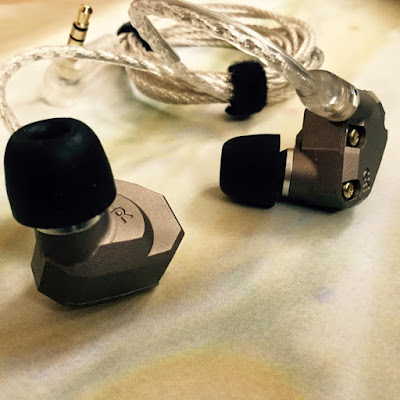Campfire Audio Jupiter Review

Introduction
Hello everybody Oscar here, and today I’ll be reviewing the Campfire Audio Jupiters. Just a brief intro before starting with the review. Campfire Audio is a subset of ALO Audio which makes high-end cables and portable amps. ALO has become a reputable brand in the world of audiophiles, and it only made sense that they would eventually get into making IEMs. For one of their first IEMs, I’ve got to say that this is one of the most impressive first tries. Often first generation products are plagued with issues that make them not very practical. However, the Jupiters are one of those rare products that show what how much can be done on the first try. Now onto the review.
Unboxing and Presentation
When buying headphones, good first impressions need to be made even before opening the box. While the box that the Jupiters come in looks and feels like normal packaging, opening it reveals some interesting treasures. The first thing you’re greeted with is the carrying pouch, which is unlike any that I’ve ever seen before. There are usually two types of carrying pouches when it comes to IEMs, the flimsy pouch style that does little more than preventing scratches, and then a lunch box sized pelican case. Both types have their benefits and downsides, but most people would agree that they are polarizing opposites of each other. Instead of going down either of these two routes, Campfire decided to settle on a unique middle ground. They provide a hard carrying case made out of leather. One of the first things you notice when opening the box is the smell of brown leather, which really adds to the exquisite presentation of the Jupiters. Opening the carrying case reveals something even more interesting; inside the case is lined with wool, something that I don’t believe any other manufacturer has done. Though the IEMS themselves already have a striking design, the carrying case assures you that you’ll be carrying them in style. Apart from the interesting, yet cool carrying case, Campfire also supplies a very generous amount of ear tips. At the same time, it’s obvious that there was no compromise in which tips were selected. The standard ones are if a generic silicone design which offers nothing special in terms of comfort, isolation, or sound. However inside there are also foam tips and spin fits. It should be noted that the included foam tips are not Comply tips and are instead regular foam tips. The spin fits are a huge welcome as they provide exceptional comfort and depending on who you ask, alter the sound for the better. Apart from that, there are no other special souvenirs that come in the box, but because the cable is detachable, then that can be thought of as an accessory. It should be noted that the included cable is of an extremely high quality and is one of the best stock cables than can come included with a set of IEMs. The initial impression that the unboxing gives is one that is sure to grab people’s attention.


Design and Functionality
When I first saw the Jupiters, the first thing that came to mind was a Lamborghini. The idea came to mind as the sharp angled design of the Jupiters look very similar to the sharp angles that are present in Lamborghini cars. This gives the Jupiters the appearance of being a fast sounding IEM, which they are. Something else that strikes me about the design is the precision and the built quality that went into making the Jupiters. The sharp design already makes them look fast and dangerous, but a closer look at the earpieces shows that these were built with extreme precision. Apart from having an all metal construction, the cuts look as if they had been done by lasers. Even the bolts that keep the earpiece together, are so small and exact that it really makes you marvel at the amount of engineering that went into making these. In the tech community, there are products that give the look and feel of jewelry or some kind of precious stone. The Jupiter does not give the impression of either of those two things, but instead, it gives the appearance of something that belongs to aliens. The design is just so sharp that it doesn’t even have to try to look extravagant. The high-tech components that make the Jupiter are reflected in the equally high-tech design. As far as functionality is concerned, these also work very well. They have a hook design which means that there is a memory wire that wraps around the ear for a more secure fit. Besides adding a more secure fit and providing comfort over longer periods of time, this type of design also eliminates a lot of the cable noise that is common to conventional IEM designs. Although this might not seem like a big deal when sedentary, walking around with these and not having any cable noise interfere with my music was something that I really enjoyed. For the most part, the design on the Jupiters is top-notch, but there is one potential flaw with them and that is that they use MMCX connectors. This type of connection is known for having durability issues, but luckily it looks like the ones that are used on the Jupiters are of higher quality and will not experience problems. If you are someone who tends to be less careful with their IEMs, the use of MMCX connectors should be something that you should take into consideration when thinking about getting these. Moving down from the earpieces, there is the cable, which is one of the best stock cables that I’ve seen included with an IEM regardless of the price. Not only is it braided, but it is silver plated, which should theoretically provide better sound. Lastly, there is the 90-degree jack which is excellent for the purpose of this IEM. Because the Jupiter was meant to be a portable IEM, having a 90-degree jack makes more sense given that it will work better with smartphones and high-end DAPs. The Jupiters and the rest of the Campfire Audio lineup remind me of Lamborghinis in that they have an eye-catching design as well as exquisite materials. They are sure to impress anyone who lays their eyes on them as they are essentially tech disguised as jewelry.

Sound Quality
Now we get to the sound quality which is the part that impressed me the most about these. When I first heard the prototype of these nearly 2 years ago, it had been the best sounding IEM I had ever heard. Now after two years since then, and having heard many more IEMs of the same caliber, I can honestly say that these are still one of the best in their class. The production unit that I have has impressed me even more so. If I could describe the sound in just a few words I would say that it is fast, articulate, and magical. No it is not euphoric or effervescent, and it won’t make your heart melt, but it will make you appreciate music a whole lot more.
Bass: When most people think of balanced armature IEMs, the first thought that comes into their heads usually isn’t bass. And this has been a characteristic of balanced armature designs. One doesn’t simply go looking for bass when they are in the search of a balanced armature design. That being said, the Jupiters have more to offer other than just quantity. As most audiophiles know, the quality of the bass will always surpass any amount of bass that is provided. And the quality of the bass is what should be kept in mind with the Jupiters. Although they don’t have the same fluid and bombastic bass that a dynamic driver IEM like the Sennheiser IE800 has, it does have some of the best bass on a balanced armature design. A track like Don’t Hate the Playa proves that the Jupiter is definitely not lacking in terms of quantity. When I first heard this track on the prototype model, there was some distortion even at a lower volume. However, that issue has been fixed and now at higher volumes, there is no distortion whatsoever. This is an extremely bass-heavy track and often times lower quality IEMs will distort on this song, but the Jupiter manages to pull through. But this song doesn’t just prove that the Jupiter has bass, it shows how well it is able to render both the sub-bass and the mid-bass. Due to the design balanced armature, IEMs tend to struggle in reproducing good sub-bass, but the Jupiter is one of those rare exceptions. During the most intense parts of the song, it's almost as if the bass can be felt by the eardrum. It’s good bass that’ll thoroughly shake your eardrums, but keep in mind that it is still leaner than the bass by a dynamic driver. And as far as the midbass, there is no lack of it and there is just the right amount. When audiophiles complain about a headphone having too much bass what they are typically referring to is mid-bass bleed. On more bass-heavy headphones, the mid-bass tends to bleed into the lower mids when the volume on a song is higher. Luckily the mid-bass here is tight and does not protrude into the mids. On a song like Doing It Right which has more mid-bass, the thumping of the bass notes sound powerful, yet they do not bleed into the vocals. So overall the bass here is of extremely high quality and is sure to satisfy those looking for a bigger sound. But don’t be mistaken, these are a balanced armature design and will not reproduce bass in the same manner. So while the bass on these will sound fantastic with almost anything you throw at them, if you exclusively listen to bass-heavy hip-hop or EDM, then these may not be the best choice for you.
Mids: When you get to IEMs in this price range, transition issues are no longer a concern. This holds true for the Jupiters as the transition between the bass and the mids is very smooth. There is no bleed from the bass and lower mids are not affected at all from the bass. That being said, the mids on the Jupiters are spectacular, especially considering the amount of bass that they have. Even on IEMs where the bass doesn’t cause bleed, there is still the chance of the lower frequencies affecting the way that the lower mids sound. However, this is one IEM where the mids are not affected by the way that the bass sounds. When it comes to the lower bass, there is is some authority to the vocals, but still, plenty of clarity to make everything sound clean. A good example of this can be heard in the song I Feel It Coming by the Weekend. There is a lot of bass on this track, and on sub-par earphones, there is too much bleed in from the bass into the mids. Due to the clean transition and snappy response times, the vocals of the Weekend sound very clear and are not affected by the large quantities of bass. On brighter IEMs, it is not uncommon for male vocals to suffer. While they may sound very clear, they tend to lack authority. But this isn’t a problem on the Jupiter as they still have enough lower mids to make male vocals sound strong. It’s in the higher mids where the Jupiters really excel due to the brighter overall sound. A good way to test this is by listening to female vocals. The song I Love You Always Forever makes Donna Lewis sound like a goddess. There is no sibilance in her voice and the whole rendition of the song sounds airy. Apart from there being no sibilance, the mids also don't sound shouty as is the case with IEMs that have a tendency to gravitate towards the mid and high frequencies. So even though the mids on the Jupiter sound incredible, and there is some emphasis on them, they never sound exaggerated. I think people that enjoy listening to more vocal oriented music, both male and female, will find the mids on the Jupiter to be amazing. Sure they’re not as lush or warm as those found on dynamic or planar magnetic IEMs, but they are more accurate which works better for most genres.
Treble: Finally, we get to the treble which is what made the Jupiter catch my attention in the first place. When I first heard these I almost cried as the amount of detail and resolution that I heard was on another level. I had heard IEMs like the IE800 and the SE846, but neither compared to the Jupiter when it came to detail. I’m not a treble head and I actually prefer headphones with a smoother high-end, but the treble on the Jupiters was so well done that it made me rethink what was possible on an IEM. The treble is extremely detailed, on the micro scale, yet still, retains some smoothness at the very top. With the treble on the Jupiters, you get something is highly revealing, yet doesn’t create harshness. It really is something special and as far as full-sized headphones go I’d have to say that the Jupiters remind me most of the Stax SR-009. People who have heard the SR009 would know that even though they are extremely detailed, the treble on them never becomes harsh or fatiguing. The same can be said about the Jupiters which have incredible detail, yet don’t make you feel as if your ears were being drilled into. A track where this detail can be exploited is in the song Within from Daft Punk. The sparkle and cymbal crash at the beginning of the song is heard with uncanny realism and make you feel as if you were in the middle of a sea of diamonds. To an extent, this amazing amount of detail is even more impressive when playing classical music. On a track like Canon in D minor, everything in the track comes to life and sounds extremely fluid. Every string in the track can be individually heard and the organs give off a deep reverberating bass. With such clarity, the Jupiters seem to take you back to the time of the recording. And a good thing with this treble is that there’s no major catch. IEMs that emphasize bass tend to do either one of two things. Either they emphasize the lower treble which creates a very sibilant or they elevate the upper treble creating an overly revealing sound. Either of these two sounds are both painful and don’t sound great at all when playing through ordinary gear or lower quality tracks. Although this sound may suit a specific genre very well, it lacks versatility. Being able to have a treble that gives off incredible amounts of resolution yet does not sound harsh is a hard feat to accomplish, but the Jupiter has managed to do it. It shines when given the right music and gear, but doesn’t tear apart tracks that weren’t recorded at the same quality. For those seeking detail, but not a harsh experience, then the Jupiters would be a very good option.
Bottom Line
The bottom line with the Jupiters is that they are an incredible set of IEMs regardless of their price. I would even say that for the performance that they offer and all the accessories that they come with, the Jupiter may even be slightly underpriced. It can go toe to toe with other IEMs that are well over $1K, and this includes Campfire’s own Andromeda. Though the rule of diminishing returns starts to become more obvious once you spend over $500, the Jupiters will make you rethink this rule. They offer an incredible amount of detail that few other IEMs in its price range can match or even come close to. It’s amazing how these can be as detailed as they are, yet present no harshness, while at the same time having bass that can compete with dynamic and planar IEMs. The Jupiter is many things but the two words that can best describe it are detailed and versatile. From the sound to the build quality to the design, the Jupiter doesn’t make you feel as if you’re getting you’re money’s worth, it makes you feel as if you have paid for something that should be worth a lot more. Basically, if you have the money then this should be an automatic purchase, and if you are a bit short on cash, then it would be a great idea to start saving up your pennies because the Jupiter is one of those IEMs where it really is worth it to save up for.
The End











































































